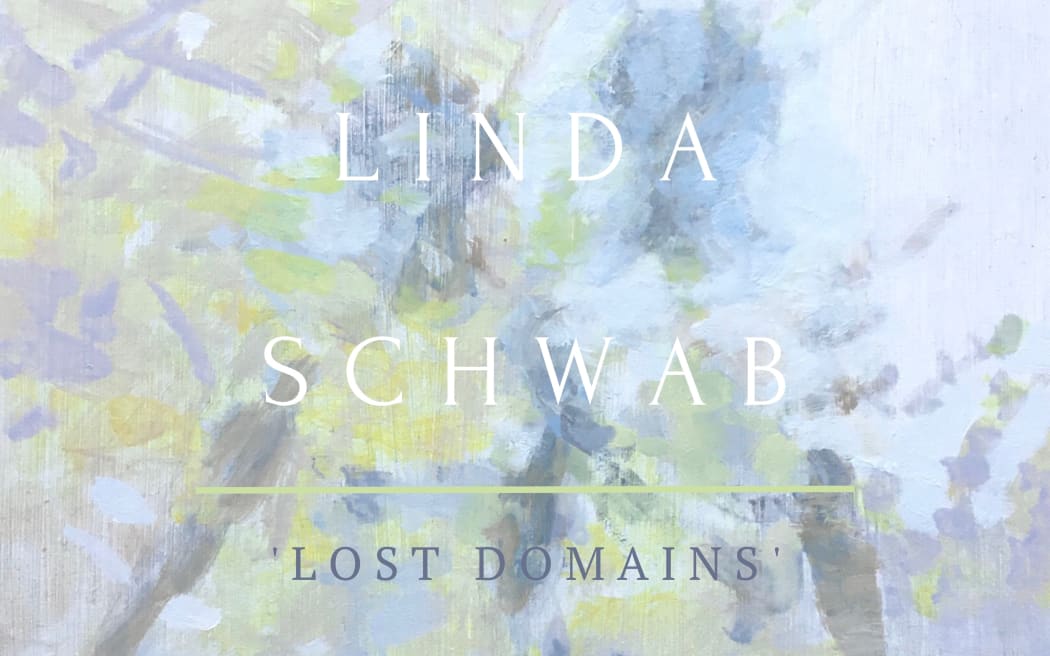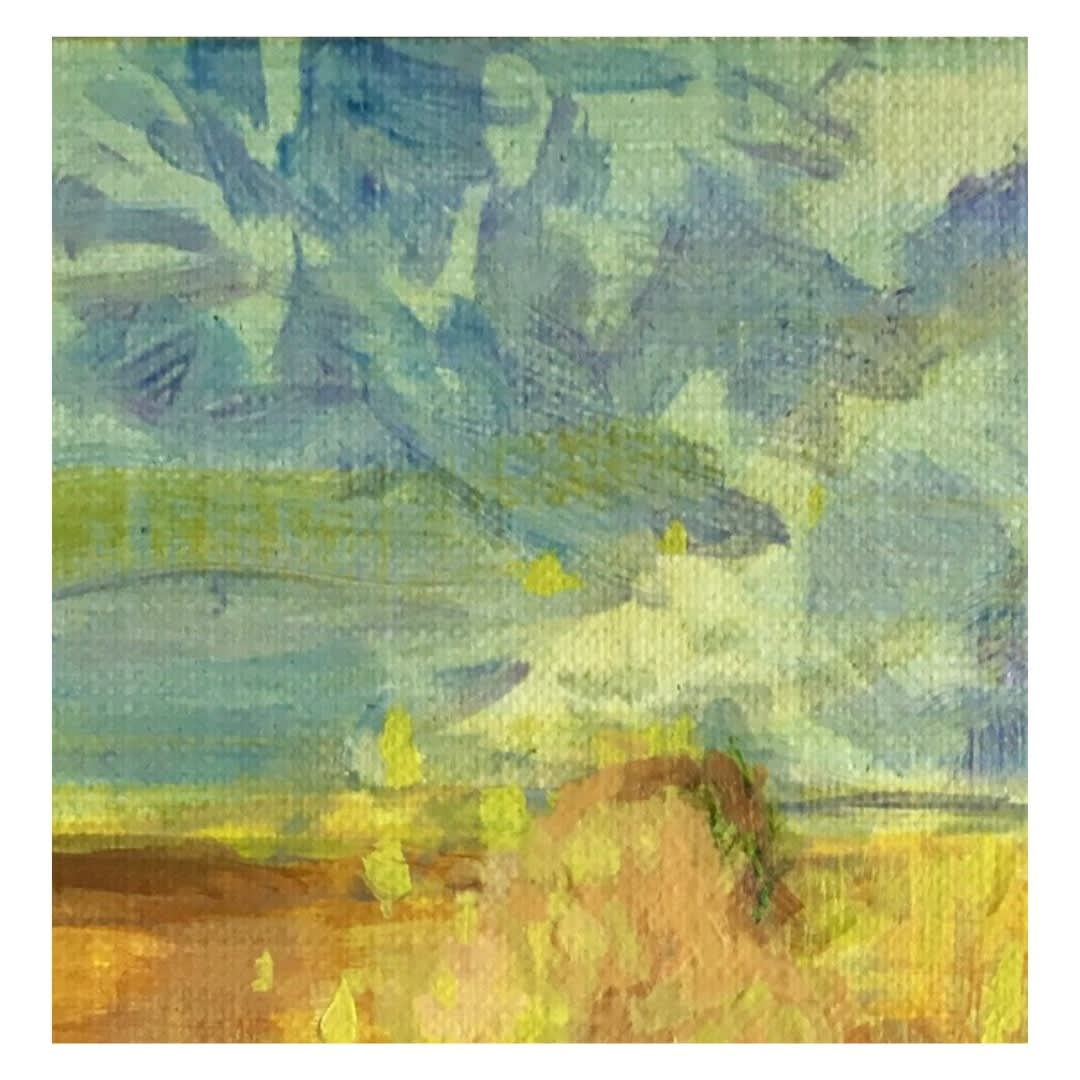
Linda Schwab - ‘Lost Domains’
23 September - 7 October
Ahead of her brand new spotlight exhibition of 12 paintings ‘Lost Domains’, Kirsty caught up with Linda Schwab, much loved Gallery artist at Contemporary Six, about her career and practice.
1. How did your career as an artist begin?
I began selling work whilst I was a student, I worked on a much larger scale then and several paintings ended up in collections like such as Unilever.
When I left Slade after completing a Masters in painting I began working to commission, I was also selling work through the Francis Kyle Gallery which showcased a lot of great illustrators of the time, Adrian George and Glynn Boyd Harte among them.
I was living and working in London in the mid eighties, it was hard to make a living painting and I decided to split my time between painting and art college teaching. Cut to the year 2000 and my work was largely digital, I began painting seriously again about 3 years ago.
2. What made you decide to move from the large, hyper-realistic works you used to paint?
I fell out of love with that kind of painting quite early on. Various galleries were promoting ‘new realism’ in the eighties and nineties but for me a lot of the figurative work bordered on fetishisation. People loved those early paintings but I felt I was being pushed in a certain direction when my interests were much more eclectic.
I moved away from ‘pictures on wall’ and began to paint on objects, ironing boards, pillowcases etc. In the early nineties I was exhibiting and collaborating with sculptor, Sheila Gaffney this really opened up my practice and for a while I left figurative painting and gallery shows behind.

detail from 'PIERROT'
3. You use photography as inspiration, what is it like to transform photographs into paintings?
I have always used photography as a tool for painting. As a student I would photograph the various elements of a composition and also paint directly from life, this collage of visual information would then be scaled up, the final image was always a hybrid of forms. Using analogue photos is about something other than a handy reference though. I am fascinated by the capture of that specific moment, photos are about a past event, I like to try to visually step back into that event.
I work quickly initially, the first draft will be an immediate impression and then as the painting develops so does the image, it’s certainly not a copy, quite often I work directly without preparatory drawings and the painting goes the way it goes.
I do like this quote by Diane Arbus, ‘A photograph is a secret about a secret. The more it tells you the less you know.’
4. How do you find your original source material?
The source material for all the works is photographic, both my own photographs of place, scene and found imagery of people. The initial found photo is distanced from its original format / physical reality by the addition of another image, of another place and time, producing a sort of double exposure. Using multiple images enables the figures in the paintings to transcend the familiar to sit, or stand, within a metaphysical, dreamlike environment. There’s an element of push me-pull you with each of the images as I paint, I like the dynamic this creates. There are definite tropes: women holding cats, sitting under trees, standing by fountains etc. The photos depict individuals but their experience is universal, the old snapshot represents in part what it is to be human. Running all the way though of course is the knowledge that most of the people whose photos I have are no longer with us and, even sadder, the albums have been sold via online auctions rather than becoming treasured keepsakes. I know that the trace of the familiar ‘old photo’ resonates with viewers and I like this connection to memory but my intention is to also make work with a poetic intensity and personal connection which I hope is universal.
I watched ‘Pandora and the Flying Dutchman’ again recently and realised that the larger paintings remind me of stills from old Technicolour films, the sense of an alternate reality where the colours and light are seductive. I love the pace of those films too, simple movements are amplified, pauses are full of intent. Viewers often comment that my work is ethereal, which I take as acknowledgment that they are witness to the anonymous, painted figures being suffused by the drama that surrounds them.

5. Your work has a dream-like, ethereal feel to it, is this your intention and why?
It’s interesting that a lot of people describe the work like that, it’s not something I set out to do but I am happy with the response. I don’t try to overthink painting anymore, I went through a conceptual phase, followed by an abstract phase and my enjoyment levels were sapped. I am an intuitive artist, now I try not to impose anything on the paintings other than the rigour of painting. By the very nature of the subject matter the paintings are about transience, our brief time on the planet.
6. Over the years you have been commissioned to produce several public art pieces. How does your approach to this kind of work differ?
Painting is a largely solitary occupation, in Public Art you’re part of a team, often a huge team, so the process obviously can’t be intuitive. In the end there is compromise involved especially in specification of materials which have to be robust, and cleanable! You’re also working with the built environment and 3D space, you have to think about multiple viewpoints as well as maintenance, there’s a lot of problem solving involved. The starting point of my public art work is the same though, a forgotten history, a human story, it always amazes me how quickly the lives of people are overwritten.

DETAIL FROM 'AMBER BEACH'
7. As a woman in the art world, do you find you are still judged along gender lines?
Whilst a student I was fortunate enough to be selected as a Northern Young Contemporaries prizewinner by Griselda Pollock she was, and continues to be, a trailblazer. In highlighting the problems of inequality and invisibility of women artists whilst doing practical things to challenge the system, she kick started my career. It’s hard to imagine what it was like back then, my first attempt at entering the RA Summer Exhibition was in 1983, there were no women on the selection panel, in fact there were hardly any females RA’s, female exhibitors were in a minority too, about 3 out of every 20 on show.
It’s taken several decades and many things have changed for the better but as Anna Serner stated, ‘Women are a gender. Men are geniuses’. You only have to look at the auction price of a Lucien Freud compared to a Paula Rego to understand that the inequalities remain, as does the myth of the great male (white) artist.

DETAIL FROM 'STALACTITES'

